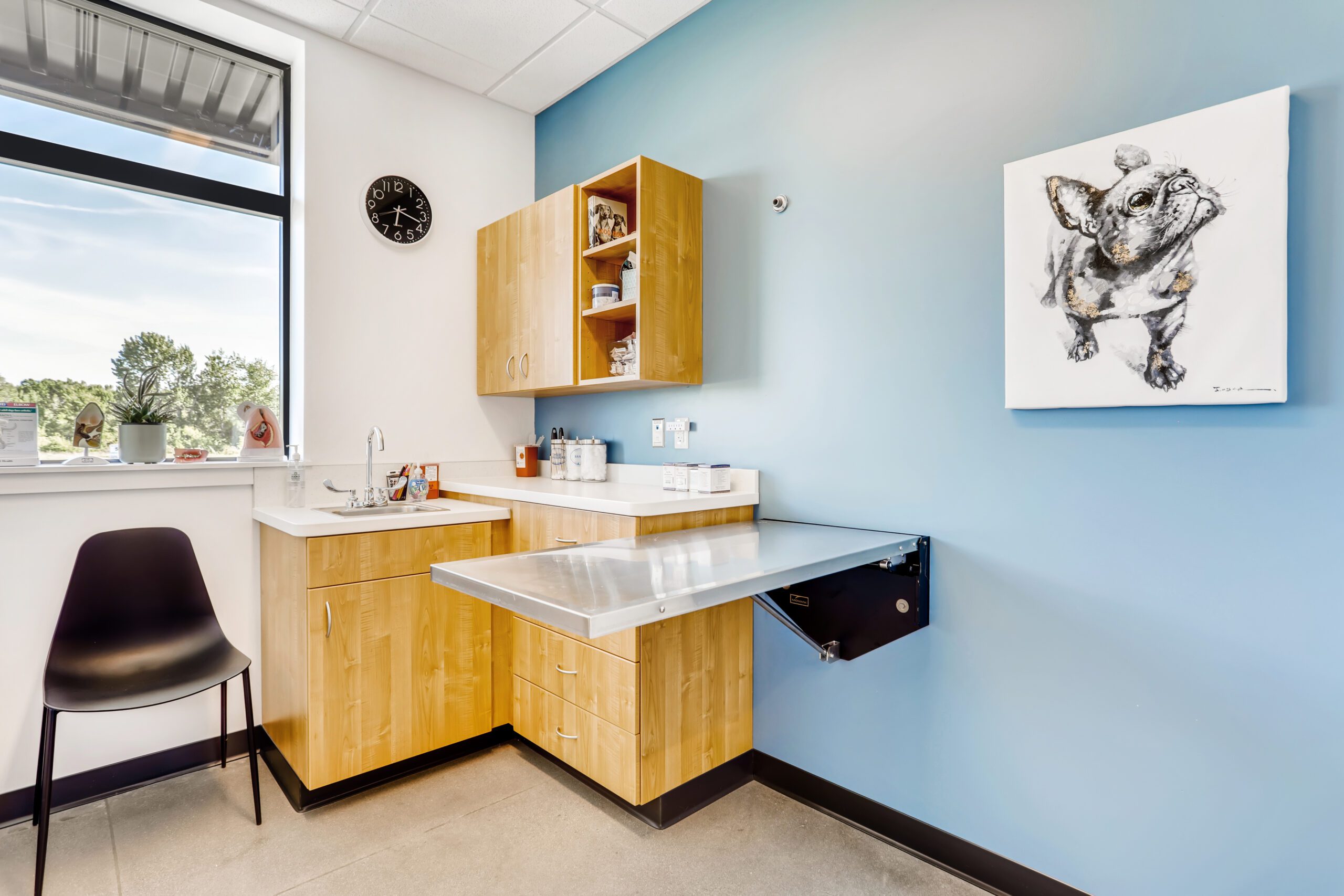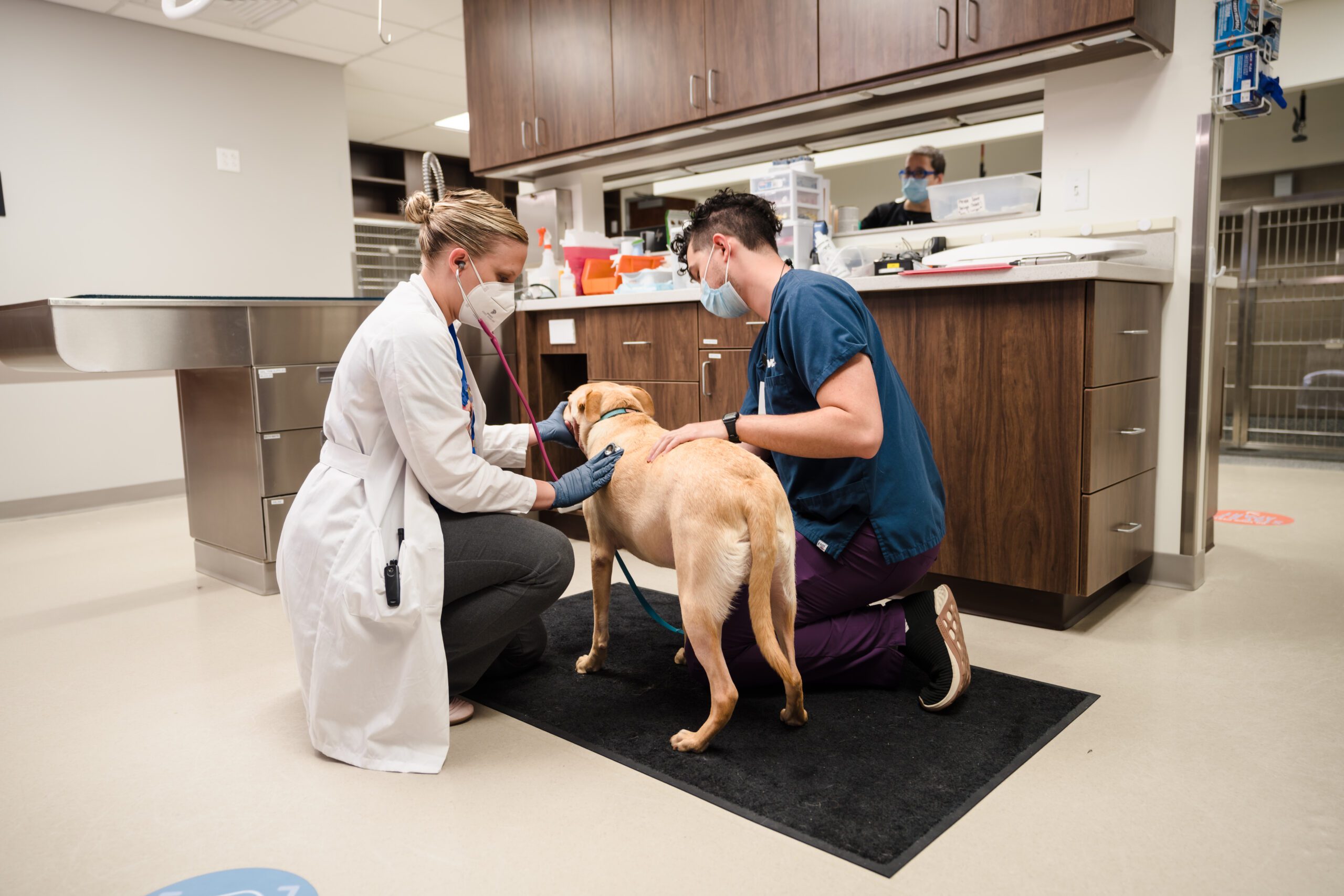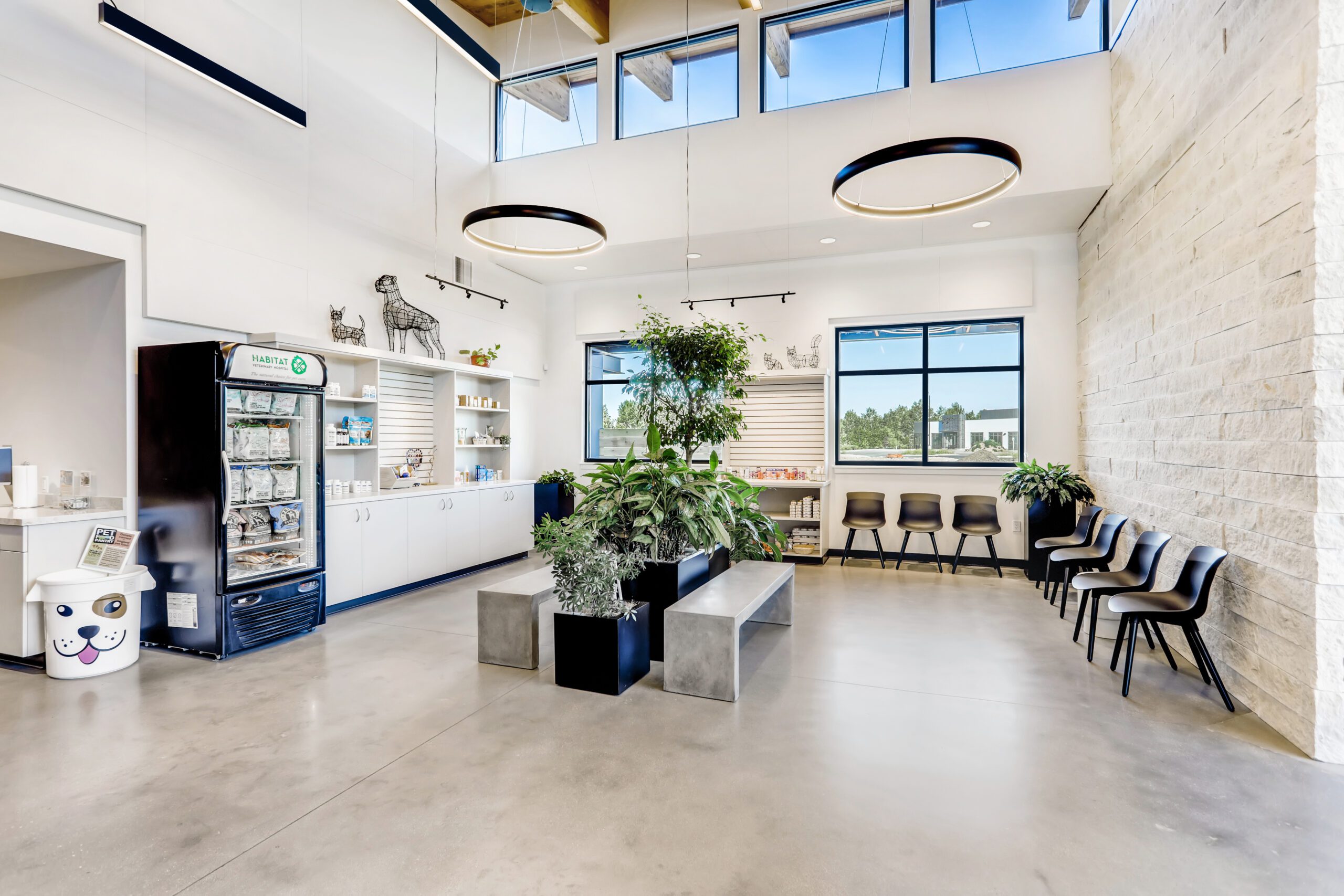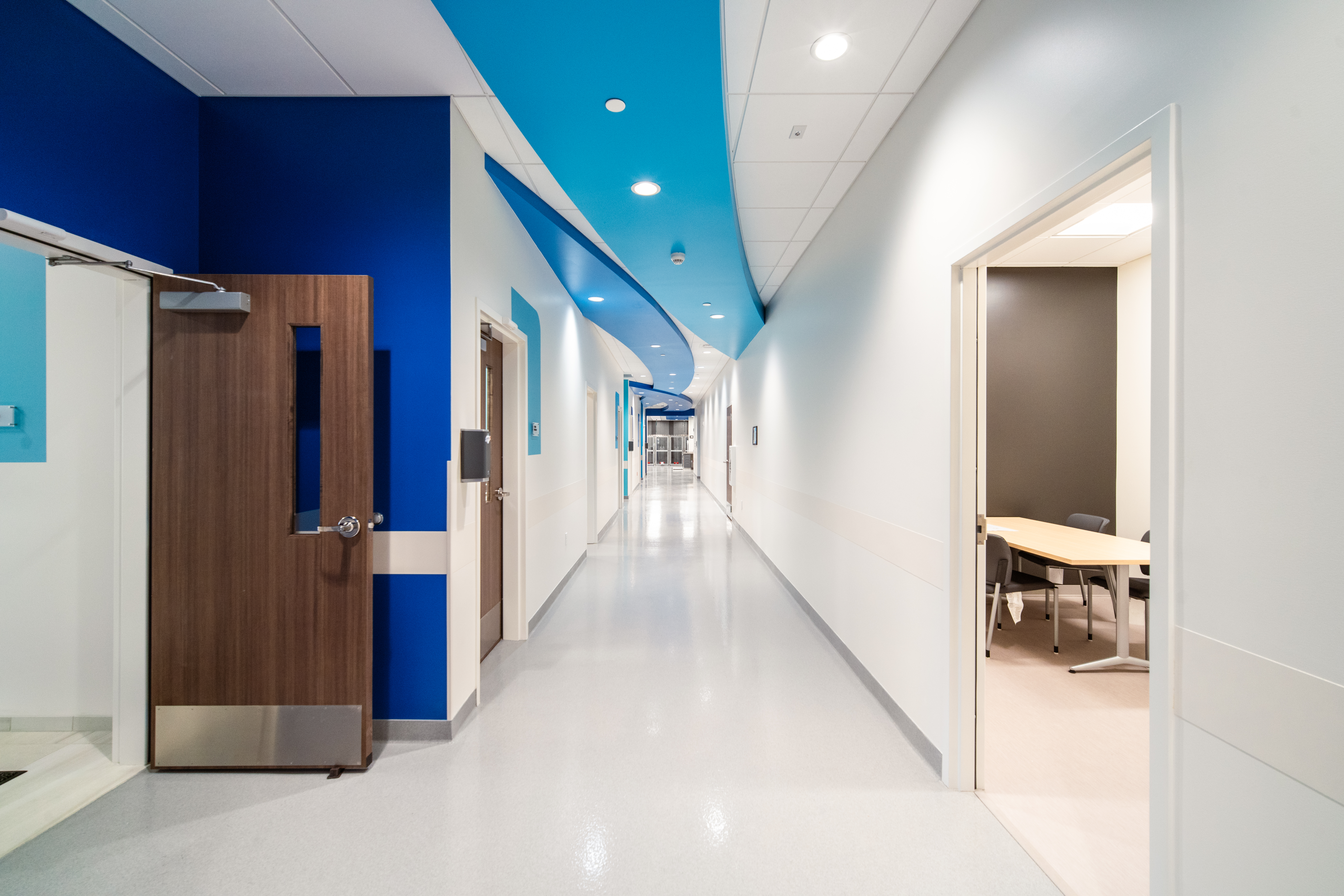Vet visits are notoriously known for being stressful – for pet owners, animals, and staff – but Fear Free is challenging this.
The online course offers resources and guidance to alleviate scary and anxiety-inducing triggers, creating a better overall veterinary experience. These teachings can be implemented in big or small ways, from keeping nervous cats inside their carrier for an exam to designing a practice layout with species-specific areas.
From the moment a patient walks in the door to the back-of-house treatment spaces, the environment influences the experience and quality of care. What kind of experience do you want clients and patients to have? What kind of culture and workplace do you want to create for your team? As specialized animal care architects and designers, we’ve seen the anxiety-reducing impact of Fear Free design choices. This approach is not a one-size-fits-all, so let’s dive into what it could look like for your practice.

What is Fear Free?
Fear Free is a philosophy and certification program developed for animal care professionals that teaches anxiety and stress-reducing pet care strategies. By understanding and addressing an animal’s fear-inducing triggers, staff can create a more positive experience for pets and their owners.
Incorporating Fear Free principles into architecture and design involves designing with a deep understanding of how animals perceive their surroundings—through sight, sound, smell, and touch. This design approach goes beyond the technical aspects of animal healthcare to consider the psychological and emotional state of pets.
Why Fear Free Matters in Design
Pets often associate vet visits with fear, caused by unfamiliar environments, loud noises, strong odors, stressful handling, etc. These triggers can lead to heightened anxiety, which causes a traumatic experience for both pets and their owners and makes treatment more difficult for staff. Becoming aware and embracing Fear Free design principles can help mitigate these stressors, heavily impacting the overall experience for everyone involved.
Fear Free Design Choices

Waiting Areas
Animals, especially dogs and cats, can become highly stressed when placed near each other. Multiple entrances, ample waiting areas, and using seating, plants, or spatial dividers to further separate pets can help reduce anxiety by preventing overstimulation and confrontations between species.
Other waiting room considerations could be implementing elevated surfaces to sit cat carriers and introducing natural lighting and material, non-slip flooring, and stress-relieving scents and sounds.
Soundproofing
Animal-centric facilities can be noisy with barking dogs, medical equipment, and numerous conversations. Using soundproofing materials, like acoustical ceiling panels and noise-dampening flooring, can reduce the overarching sound level to create a more peaceful atmosphere.

Soothing Color Schemes
Colors play a vital role in building a comforting environment. Selecting soft, muted tones like blues and greens, are known to have a calming effect on animals. Substituting harsh, bright colors with these or more natural-based materials (stonewalls, greenery, water elements, etc.) can reduce overstimulation and agitation.
Odor Control Systems
A heightened sense of smell in animals makes them highly sensitive to certain odors, particularly those associated with medical environments like disinfectants or chemicals. Advanced air filtration and ventilation systems neutralize strong smells and ensure the facility maintains a fresh, non-intrusive scent.

Low-Stress Handling Areas
Design choices like height-adjustable tables and soft, non-slip surfaces on scales can minimize discomfort for pets. Wider indoor exam rooms or a designated outdoor yard for examination allow pets more personal space, avoiding a claustrophobic feeling. Additionally, equipping these rooms with the necessary checkout technology and resources can avoid reintroducing the animal to the stressors of the lobby and waiting area again.
In the back-of-house, avoid cages facing each other and keep top cages reserved for cats. These small layout decisions seem simple, but they’ll have a major impact.

Natural Light and Outdoor Access
Animals, like people, respond positively to natural light. Incorporating windows that bring in daylight not only reduces stress but creates a more welcoming atmosphere. In some cases, providing access to small, secure outdoor areas allows pets a chance to decompress before or after their appointment, especially for longer stays.
Quiet, Private Recovery Areas
Post-treatment recovery can be a particularly vulnerable time for pets. Designing quiet, private recovery areas away from the noise and activity of the clinic ensures that animals have a calm space to rest and heal. These spaces can be designed to mimic a more homelike environment, using soft bedding and non-intrusive lighting to make recovery as comfortable as possible.
These intentional design choices are reflected in more than the quality of physical care but the emotional and psychological well-being of pets and people. Visit our Veterinary Design portfolio page to see how animal care facilities applying a Fear Free approach are setting the tone for a relaxed, anxiety-reducing care experience. Interested in learning more about how it could look for your practice? Send us a message!
Written By MD Architects
MD Architects (MDA) is a full-service relationship-based architecture firm providing design solutions to the animal care and human healthcare markets.
November 21, 2024



